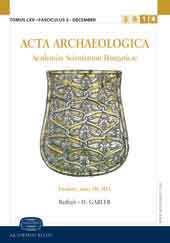A lion’s share of attention: Archaeozoology and the historical record
A lion’s share of attention: Archaeozoology and the historical record
Author(s): László BartosiewiczSubject(s): Archaeology, Social history, Ancient World
Published by: Akadémiai Kiadó
Keywords: Archaeozoology; archaeology; lion;
Summary/Abstract: This is a review worth starting with Aesop (?620–564 BC). Eight classical Greek texts written in the Age of Homer (8–7th c. BC) reveal that lion was most frequently mentioned among wild animals, surpassed only by the six common domesticates that have directly surrounded people. References to this beast far outnumbered those to comparably large, dangerous and highly valued carnivores (Fig. 1). This is in sharp contrast with the relative underrepresentation of lion bones in archaeozoological assemblages. As A. Meyer noted with immense foresight over a century ago, “From the philological side there is evidently no basis to doubt… that lions indeed lived in Europe… around 500 BC… [Although] until recently no lion bones have been found in Greece, one should consider how few excavations took place in those lands”. Only a quarter of a century later, excavation at the 5th–2nd century BC site of Ol’bia, a Greek colony on the Black Sea coast in modern-day Ukraine indeed yielded the first bones of large Felids, attributed at the time to animals kept in a menagerie or the import of precious pelts. Although these possibilities must always be taken into consideration, reconfirming Meyer’s optimistic view large faunal assemblages recovered in the Balkans during the last three decades have produced increasing numbers of lion remains from prehistoric as well as early historical times. This study seeks reconciling the remaining discrepancies between the historical record and archaeozoological evidence.
Journal: Acta Archaeologica Academiae Scientiarum Hungaricae
- Issue Year: 60/2009
- Issue No: 1
- Page Range: 275-289
- Page Count: 15
- Language: English
- Content File-PDF

